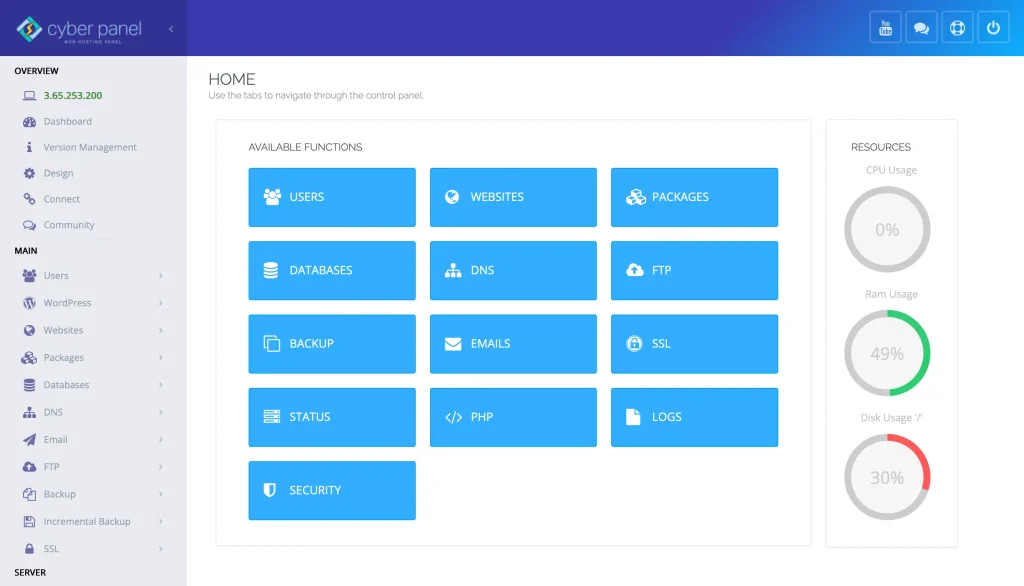Anaconda is required if you are a data scientist, machine learning engineer, or developer who wants to use the full power of Python, so here we are going to describe how to Install Anaconda Ubuntu. The Anaconda distribution is open-source and enables easier package management and deployment, while specifically catering to data science and machine learning applications. It allows you to seamlessly manage environments, packages, and dependencies for Python and R. For scientific computing, data analysis, or deep learning, Anaconda has it all covered in a very easy-to-use package.
Ready to begin? Let’s dive in!
What is Anaconda?

Anaconda is a Python and R distribution for scientific computing and data science. It makes it easier to install Python libraries and tools and it provides a straightforward interface for managing packages and channels and environments. Anaconda comes pre-loaded with many common packages such as Pandas, NumPy, and SciPy and integrates with Jupyter Notebooks so that you can easily use them, making it an important part of the data science ecosystem.
Reasons To Install Anaconda Ubuntu

When you install Anaconda in Ubuntu, you have access to:
- Ease of Package Management: The package manager of Anaconda, ‘conda’, takes care of installation, updates, and any dependencies, so you won’t face the conflicts and problems that normally arise when you manage libraries on your own
- Virtual Environments: Create isolated environments for different projects to avoid dependency conflicts.
- Jupyter Notebooks: Anaconda is automatically installed with Jupyter Notebook which is an interactive environment that makes coding, visualization, and data analysis much faster.
- Many Common Libraries Pre-installed: Anaconda comes with a multitude of scientific and data analysis libraries pre-installed so you don’t have to spend time installing them.
Install Anaconda on Ubuntu
Now let’s go with step by step guide to install Anaconda in Ubuntu. These are a few easy steps that can be finished in under minutes.
Step 1: Update Your System
Get exclusive access to all things tech-savvy, and be the first to receive
the latest updates directly in your inbox.
Update the system before performing the installation process. Open your terminal and run:
sudo apt update
sudo apt upgrade
Step 2: Download the Anaconda Installer
Official Anaconda Installer for Ubuntu can be downloaded and installed. We will use wget to download it directly to our system. To download the last version of Anaconda, run the following command in your terminal:
wget https://repo.anaconda.com/archive/Anaconda3-2023.03-Linux-x86_64.shNote: If this link is no longer valid, visit the Anaconda website to download the current version.
Step 3: Verify the Installer
It’s a good thing to check the SHA-256 hash of an installer to verify its integrity. Run the following command:
sha256sum Anaconda3-2023. 03-Linux-x86_64. shMake sure the output hash matches that of the official Anaconda website.
Step 4: Run the Installer
So now let’s install the Anaconda. Execute the installer with the following command:
bash Anaconda3-2023. 03-Linux-x86_64. shThese steps will guide you through the installation in the terminal. You need to accept the terms and conditions and select an installation directory (it installs in your home directory by default).

When the install is complete you should see a message that says it was successful.
Step 5: Initialize Anaconda
You should now also initialize Anaconda in your shell to properly configure it. You can do so with the command below:
source ~/anaconda3/bin/activateTo have Anaconda loaded automatically every time you start a terminal run:
conda initThen restart your terminal (Close and Open)
Step 6: Confirm the success of the installation
To check that Anaconda is correctly installed, execute the command:
conda --versionThis should show the version of conda that was installed. Moreover, to check the version of Python use:
python --versionPost-Installation Steps After Installing Anaconda on Ubuntu
Once you install Anaconda for Ubuntu, here are some things you can do:
Create a Virtual Environment
Anaconda also helps in creating isolated environments for the project to overcome the problem of dependencies. With that, to create a new environment, use:
conda create --name myenvNow activate the environment with:
conda activate myenvInstall Packages
This allows us to install Python packages:
conda install numpyThe command above is to Install some other data science libraries as per your requirements i.e. Pandas, Matplotlib, SciPy.
Launch Jupyter Notebook

Anaconda includes Jupyter Notebook, a web-based development environment for coding and data analysis. To start Jupyter Notebook, just execute the following command:
jupyter notebookThis will open a new window in your default browser in which you can create and run Python notebooks.
CyberPanel and Anaconda Management for Ubuntu

You are on a Linux server, so you could install Anaconda on it. While CyberPanel is primarily focused on managing websites, databases, and DNS configuration, you can also use CyberPanel’s terminal interface to manage your Python environments and dependencies on your server. By having a simple-to-use interface and Docker integration, CyberPanel i.e. an open-source web hosting control panel, can help managing environments where you would commonly deploy and run Python applications like web apps, data processing pipelines, or machine learning models streamlined.
FAQs: Install Anaconda Ubuntu
1. How do I install Anaconda Ubuntu?
For Ubuntu install Anaconda, you can download the installer script and run it from the terminal, and then follow the prompts. Set it up for use with conda init.
2. What is the difference between apt install and conda install?
The command for installing system-wide packages on Ubuntu is apt install, whereas conda install is used to install packages in an Anaconda environment that require compatibility with Python-based tools and libraries.
3. Is it possible that I could install Anaconda on Ubuntu without wget?
Yes, you can download the Anaconda installer from the official website and install it in the terminal.
4. How do I uninstall Anaconda on Ubuntu?
To uninstall Anaconda, simply delete the Anaconda directory by running rm -rf ~/anaconda3. You can also remove the related configuration files from .bashrc.
Final Thoughts!
So far, we have learned how to Install Anaconda on Ubuntu. Configure a powerful development environment in just a few steps with Anaconda’s package management, environment isolation, and pre-installed libraries. Python is a versatile programming language with a wide range of applications, and whether you are a beginner breaking into the world of data science or an experienced developer, Anaconda makes complex workflows simple and helps you set up your work seamlessly no matter the project.
Install Anaconda Ubuntu Now and Enjoy Its Features!



